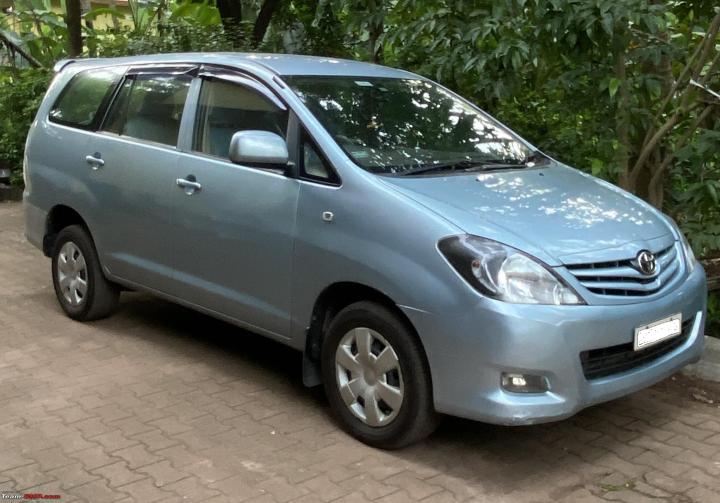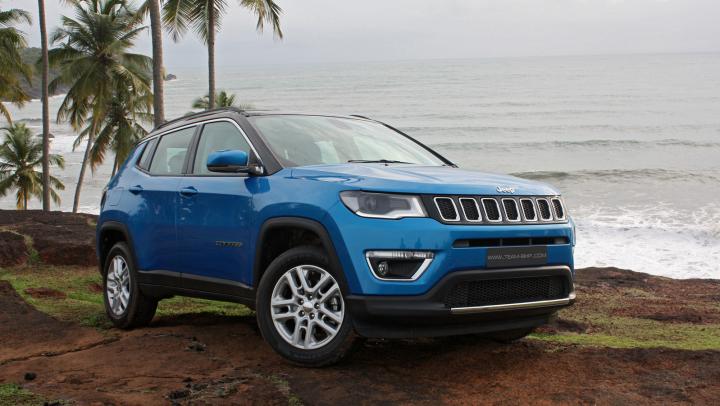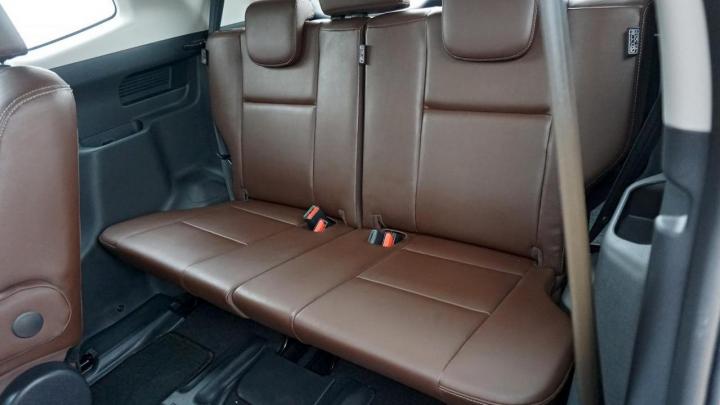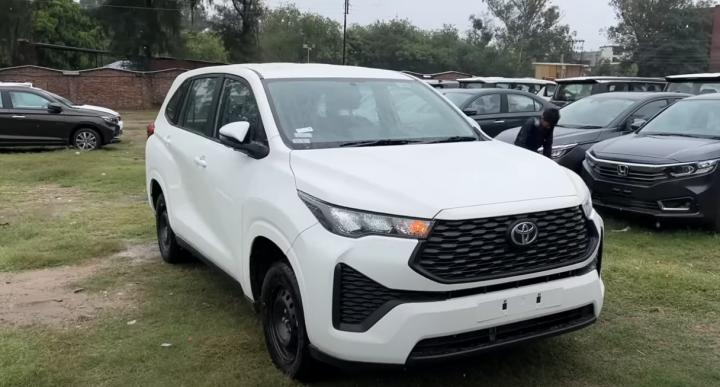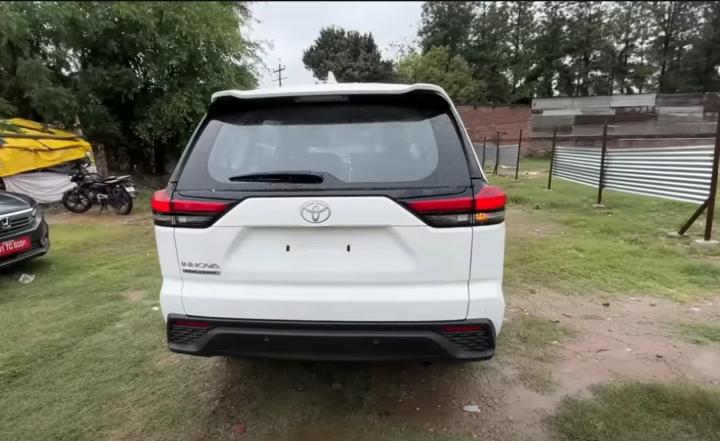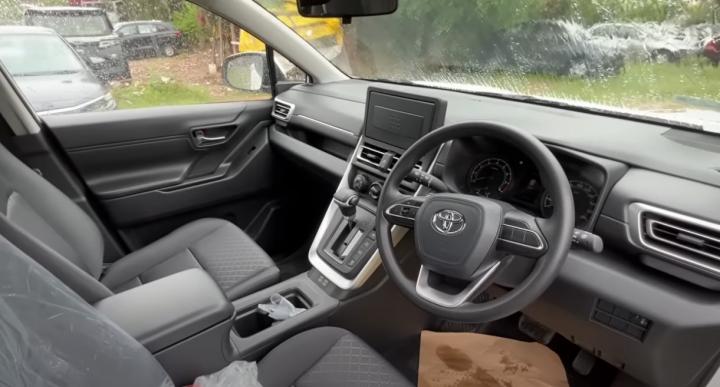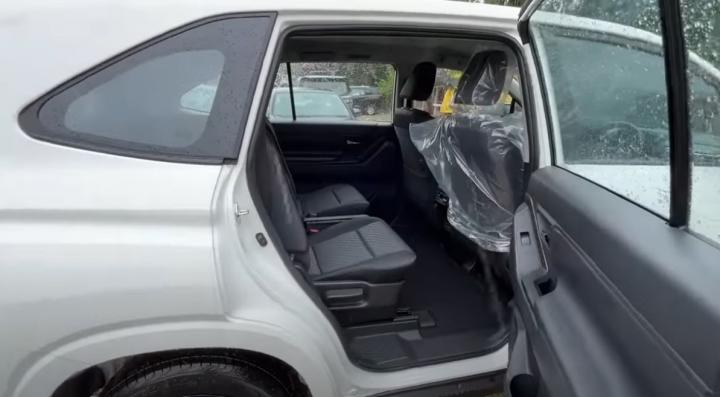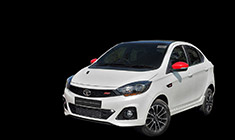News
Toyota Innova airbags fail; Owner to get Rs 32 lakh compensation
The carmaker and dealership have been directed to either return Rs 15 lakh with 9% interest or give a new Toyota Innova to the owner.
The National Consumer Disputes Redressal Commission (NCDRC) has directed Toyota to pay a compensation of Rs 32.07 lakh to an owner after the airbags in his Innova failed to deploy in an accident.
The NCDRC found that the Toyota Innova sold to Sunil Reddy was defective. As compensation, the NCDRC has directed the carmaker and Nandi Toyota Motor World to either return Rs 15 lakh with 9% interest or give a new Toyota Innova to Reddy, after more than 12 years of the accident.
Reddy had purchased an Innova VX Diesel 7-seater on March 11, 2011. It was involved in an accident on August 16 of the same year. The front portion of the vehicle was severely damaged in the accident. However, the airbags failed to deploy, causing severe injuries to the occupants.
The car was handed over to the service centre in Bangalore, which Reddy claims, proceeded with repairs, including welding works on the vehicle’s body, without providing any estimation or intimation.
Toyota did challenge the order in the State Consumer Commission, but the appeal was rejected.
Source: ET
News
2011 Innova owner upgrades to 2023 Hycross: Impressions after 500 km
The Skoda Kodiaq and Hyundai Tucson were the other two cars which looked promising to me.
BHPian sdasgupta recently shared this with other enthusiasts.
My Tale of two Innovas - from Gen 2011 to Hycross - how “Lightning” became “Tony”
Happy New Year 2024 everyone. Since I recently upgraded from my 2012 (pre-facelift) model Innova to the Hycross just before Christmas, I thought I would begin the new year with a post on the experience.
The upgrade dilemma
Well, is there ever any reason to upgrade a Toyota Innova? These machines are indestructible and timeless! By October 2023, my Innova was 11 years old and had crossed the 120K kms mark, but did not look or feel old in any way. The interiors were almost as good as new, and the common remark from my friends was that my car did not seem to age at all. It had never let me down and had needed only periodic maintenance, which was always done at Toyota service centres. So, though I had planned not to keep the car beyond 10 years, from a “head” perspective, there was no reason to change. But what about the “heart” side? I will confess that the Innova had never tugged at my heart, till Toyota unleashed the “Hycross” on us. It immediately appealed to me, and started me thinking - “well, this may be the perfect balance between head and heart”!
One thing that suddenly hit me when I brought up the topic of an upgrade with my family is that a car, when kept long enough, becomes part of the family and creates emotional bonds. Both my daughters had grown from childhood to teenage and adulthood in the capacious interiors of the car and had innumerable memories of long road trips, the car sometimes accommodating all of their friends. They had even named her “Lightning”. They were both like - “How can you think of selling a member of the family?”. Wifey also chimed in with - “The car has served us faithfully for so long, it feels like a betrayal to let it go.” So, you can see that I was in a real quandary.
How Lightning met her twin!
Since I have started telling this story, I have to include an incredible coincidence in 2022 that left me speechless. I had parked the car and gone into a shop and when I stepped out, I stopped and stared at the sight that met me! Wondering what I saw? I will let the picture below do the talking…and, as you will notice, even the number plates of the twins matched except for the last number. I had to immediately click a priceless picture. The nearer one on the left is my car.

How the decision was made
The event that tipped the scales came about in Q3 2023 when my company upgraded the car lease policy with even better terms including fuel reimbursement. This greatly strengthened the “head” factor of the decision. The “heart” had already been won over, so I finally firmed up my decision and started the paperwork in Sep 2023.
Other options considered
Even though I had almost decided on the Hycross, since I was planning to keep this too for a long time, I wanted to make sure that I looked at other viable alternatives, so that I would not regret my decision later. The other two cars that looked promising to me were the Skoda Kodiaq and the Hyundai Tucson. So I did take test drives of both before deciding.
Skoda Kodiaq: This had always been a car that I wanted to own since it provided the equivalent features and luxury of the big three. I had always liked the looks and of course, the 4x4 capability could come in handy, though it was not a must-have for me. I loved how the car felt and drove. It is truly a wonderful car. However, as soon as my wife tried out the rear seat, I realized how difficult it is to replace an Innova - she felt claustrophobic in the back and also felt it was much less spacious. In addition to that, the fact that no diesel option was available meant that fuel economy would be a concern - an area that the Hycross Hybrid excelled in. Therefore, I had to take Kodiaq off the list.
Hyundai Tucson: I was sceptical about this from the start since I knew it was only a 5 seater and was not a real replacement for an Innova, but since it was a CKD and I had read good things about it, I wanted to try it out. Again, the car felt nice though it was not as fast on the pick-up as I had expected. However, I just could not ignore the fact that after sitting in the captain seats of an Innova, there was no way my family would be happy in the back of the Tucson. And then, when I tried the rear seat myself, I realized that the rear seat was directly over the rear wheel, and hence the ride there was nowhere near the comfort of an Innova. So, Tucson was also struck off the list.
Which model?
I had the 7-seater Innova, and loved it, so that part was settled. I had taken the test drive in the top-end ZXO model and loved everything except the thin profile tyres, which made the ride feel slightly harsher than my current Innova. Also, Toyota was not taking any fresh bookings for ZXO by this time, and though the leasing company told me they could get my booking upgraded to ZXO later, I knew that the wait time would be higher. Therefore I carefully looked at the options and realized two things. Firstly, I did not think I would be able to use the Driver Assist systems much in India. I frequently use rental cars with these features during my official travels to the US, and yes, I do find them very handy on the highways there, but I did not think that the experience would be the same in India. Also, I do not want to get out of habits like checking my blind spots, since I often drive my wife’s 2016 grand i10, which does not have any of this tech. Secondly - I felt the need to use the power switch to incline the ottoman seats to move to the rear bench was not very practical, manually moving them would be much faster. I felt that the higher sidewall with the 17 inches of the VXO was more important since it would improve the ride and reduce anxiety about tire and alloy damage. So that was the model I chose, in the blackish Ageha colour.
Delivery experience
I received the car on 23 Dec 2023, and the experience was wonderful, with everything going smoothly. The car was ready before the promised time, they showed me that all the accessories I had asked for were in place, and gave a quick demo of the main features (which I did not need, thanks to all the information I had already gleaned from the t-bhp thread !).
My daughters have promptly decided that this one is a “he” and have named him “Tony”. So I now have it from the best authorities that the Hycross looks more butch than the old Innova.

Driving impressions so far
Well, the first thing I will say is that all doubts about the upgrade have disappeared! The two cars feel poles apart - for good reason. One was a diesel and the other was petrol. One was zero tech and the other was full of tech (even without driver assistance). The older one used to start with the characteristic big-diesel growl and turbo whine, while this one starts completely silently in electric mode. I have done a couple of 70+ km rides including city and highways, and I can say that driving this car is much more stress-free than my earlier Innova.
The car has an amazing road presence. One interesting thing that I noticed is that some Crysta, XUV and ScorpioN drivers seem to get a bit agitated on seeing this car and make haste to overtake it. Have other owners felt the same? The good part is that I have bought the hybrid for its energy efficiency, and the fact that the display keeps telling me my current and average fuel consumption makes me drive sedately with a light foot, which is what this car needs. Have driven around 500 kms so far, and am already getting an average of around 18 km/l, which I am hoping will improve over time. By the way, could not find any instructions or references to a running-in period. Do I not need to worry about running with these modern engines?
I find that the owner's manual is not very helpful for some of the intricate steps for a few settings. The instrument cluster interface is also not very intuitive. I had some trouble figuring out how to get the TPMS to work and had to resort to some online videos. The wireless Apple carplay system is still a bit confusing when I try to register two phones. The moment I registered the second phone, the wireless Carplay stopped working for the first phone. I will need some more experimentation to figure that out. Also, could not set the “auto lock doors based on position of gear lever” feature even after following all the steps in the manual.
And finally, a couple of photos to end the post:
Here’s Tony, the day after he came home. I have now started turning back for a peek at his profile while walking away, never did that with Lightning.

Check out BHPian comments for more insights and information.
News
AC blows hot air, instead of cooling my Innova's cabin: Finding a fix!
I think significant time and quite some money has been spent on this issue - however, the issue still persists.
BHPian Alphard recently shared this with other enthusiasts.
Hi Team,
I am writing to you to seek help with a problem that I am facing with my 2010 Toyota Innova 2.5V D-4D.
Problem Statement
My Car has an automatic AC and the AC normally works well and cools the entire car cabin effectively. However, sometimes, the AC starts heating the cabin instead of cooling the ambient air - this issue happens intermittently.
Problem Description
If I switch on the AC, sometimes it will start cooling normally and sometimes it will start heating the cabin.
When the AC starts cooling, the AC will keep cooling regardless of how many km or Hours the vehicle is driven. However, if the vehicle is stopped and then restarted, there is no guarantee that the AC will resume cooling or start heating the cabin instead.
If the AC starts heating the cabin, the AC will keep heating the cabin regardless of what temperature is set on the AC control panel. Once the AC starts heating, it works completely opposite of what it is supposed to do i.e. if I lower the temperature on the AC control panel, it will start blowing more hot air in the cabin.
When I started the vehicle, the problem with the AC was indicated by the AC control panel going dead and the blinking of the AC defogger light (i.e. the small amber-coloured LED on the defogger button on the AC control panel) for about 20 -25 seconds. Once the AC defogger lamp stops blinking, the AC control panel starts - however the AC may or may not cool the cabin. Moreover, this problem seems to affect only the front AC air vents on the dashboard - the rear AC vents keep cooling the cabin.
I have checked online and even visited Toyota Service Centre 4 times in the past 2 -3 months to get this issue addressed. Initially, they had re-programmed the AC control panel and told me that the problem had been resolved. However, despite the AC control panel re-programming, the problem had re-occurred and I have been visiting them repeatedly to get the issue resolved.
In one of my recent visits to the service centre (Aug 1st week), my vehicle was kept with the Toyota Service Centre for 3 days to enable them to properly diagnose and fix the issue. They had replaced the AC control panel giving me assurance that the problem had been solved. However, despite their best efforts, the problem occurred with the vehicle being driven for less than 100 km since taking delivery of the vehicle.
After the problem reoccurred, a team from Toyota Service Centre was sent to my home to check the issue. During their visit to my home, we took the vehicle for a trial run and a different issue with the AC control panel cropped up - the AC panel would keep turning on /off, display random numbers and become unresponsive during the drive. The Team took the vehicle with them so as to attend to the issue. They investigated the issue and I was informed that it was due to some loose electrical connection. The vehicle was with the Toyota Service Centre for 4 days and now the original AC problem has reoccurred with the vehicle being driven for less than 100 km.
I think significant time (i.e. total of 8 days on 4 occasions) and quite some money (~= INR 12000) has been spent on this issue - however, the issue still persists.
The staff at Toyota Service Centre has been helpful, sensitive and responsive to my concerns however now I am at my wit's end trying to understand how to get the problem fixed.
I raised a Grievance with Toyota India last week however they have just routed me back to the same Toyota Service Centre. Given the past experience, I am not sure whether taking up this issue with the same Toyota Service centre will do any good.
I would like our members to guide me based on their rich experience and technical knowledge and advise me on the way forward.
Thanks & Regards
Here's what BHPian Jeroen had to say on the matter:
If the Toyota mechanics start swapping electronic parts or reprogramming stuff I would hope they did a thorough analysis. This means hooking the car up to a proper OBD analyser that can access the AC system. Ask them for the error codes. If they don’t know or say it can’t be tested, you know they are lying.
Reprogramming the computer is unlikely to have been the problem in the first place.
I believe this problem to be more likely related to one of the sensors, flaps and or valves that control the airflow. Not sure how they operate on this Toyota, pneumatic (vacuum) or electrically.
Whereas electronic problems can usually be diagnosed easily, if you have access to a good OBD analyser, everything else is a lot more complicated. It also means in most cases taking the whole dashboard apart! Ask me how I know!
So you really need to find a very competent mechanic and it might take quite a few hours to find the problem.
Good luck
Here's what BHPian shikh_oberoi had to say on the matter:
Please check if the outside temperature sensor is working correctly. How much temperature does the car show on the screen?
AC mechanic damaged my Verna's outside temperature sensor and the car was blowing hot air. The AC panel showed a temperature of 8*C. He fixed it and the temperature changed to 38*C and it started cooling again.
Here's what BHPian NomadSK had to say on the matter:
Hey, seems I had almost a similar problem in my vehicle, check post#84
The local FnG guy went below the dashboard on the passenger's footwell and corrected the blender door actuator's position which was stuck in its position. That’s what he told me, I couldn’t get the exact troubleshooting scenario because of the language barrier and while he was fixing it (I thought it would take some considerable time) I went to get some water and while I came back he said, it was fixed. At that point, I was a bit sceptical. One tends to trust more service centres than a local mechanic.
Afterwards, I tested it with a few scenarios (auto/manual, heating/cooling), it’s been a few months now and it’s working fine. I couldn’t update the thread, since I didn’t exactly know what he did in those few minutes. He even didn’t charge me for this, since he had earlier taken the payment for OBD scanning.
So I guess it’s all about correct troubleshooting with an OBD scanner and the correct fault finding. Don’t let anyone implement the hit-and-trial method. At the Toyota service centre, they told me, that they would have to pull down the whole dashboard only for the diagnosis.
Here's what BHPian dhanushs had to say on the matter:
The heat in the hot air is from the engine coolant and there is a valve that controls it.
Most likely in your case that valve is a problem and it brings in hot coolant even when not asked for. You have to go to a dedicated Car AC Mechanic to solve the issue.
I had a similar problem in my Ford iKon years back and the jugaad done was to bypass the coolant completely. i.e. I only get cold air.
Check out BHPian comments for more insights and information.
- Tags:
- Indian
- Innova
- air conditioning
- Issues
News
Reliable & safe car under Rs 40 lakh for travelling post-retirement
We currently own a 2009 Toyota Innova diesel that has covered 2.75 lakh km and would want our next vehicle to last 15-17 years from now.
BHPian CJP recently shared this with other enthusiasts.
Hello folks,
Our 14-going-on 15-year-old Innova Diesel has covered over 2,75,000 KM this year, I bought it in 2009, upgrading from an Accent CRDI and a Mahindra Bolero before that. We've been Diesel fans in the family and would love to continue with a Diesel car into the future as well.
Some background:
I am getting close to retirement age, and perhaps have a couple of years of service left, and would like to replace our 14-15-year-old workhorse with something that is a bit more luxurious and can serve as a companion from post-retirement to when I am about 75 years old (isn't that the upper limit for driving in India?) - that's about 17 to 15 years from now.
My wife and I have ambitions of travelling around the country, mostly driving, staying in places which interest us for a few weeks or even months and then moving on to the next destination. We intend to do this hopping for the first few years after my retirement. At least that's the plan, not sure how all of this will work out.
The car (rather companion) we need:
Hence a companion on our travels needs to be built to last, reasonably free of drama or need for roadside assistance - reliable as our Innova has been, simple enough to fix in most states without the need for brain surgeons or rocket scientists. Fairly cheap to run (hence the preference for Diesel), torquey enough and have basic 4x4 capability to drive on relatively bad roads without having to replace our teeth or reset our bones.
We are aiming here for being able to get from point A to point B at relatively decent speeds, safely. Safety is a priority. Something that does not stand out and screams 'look at me' is also another factor.
Good seating, front row for the most part, quiet cabin, sorted suspension and air conditioning. Space to carry a couple of cases and some bits and pieces. And of course full-size spare too!
And finally of course the price - under Rs.40L would be great, even at Rs.40L we will be splurging, but our IFA (independent financial advisor) says that is ok and we will not be left in penury after this purchase.
With all these in mind, we (my son and I) built a short list, with some inputs from my wife. And the list looks like this, in no order of preference:
- Jeep Compass
- Mercedes GLA220D (blew our budget - perhaps used?)
- Citroen C5 (FWD only - cushy ride though, lack of country-wide support)
- Hyundai Tucson (not particularly fond of this one)
- Fortuner (too big, too heavy and we will need to replace our bones/teeth at some point)
- Audi Q3 / Skoda Kodiaq/Kushaq, VW Tiguan (petrol)
- BMW X1 (will blow our budget)
What we did not consider
- Tata Safari / Harrier
- Mahindra (XUV 700 or Scorpio)
- Force 1 Gurkha
Looking for advice based on the massive experience and expertise here and also whether a used/pre-worshipped car from a higher segment would make sense.
Thank you very much for your time. Any and all help on this is much appreciated.
Here's what BHPian AYP had to say about the matter:
Looking at your preferences and the list of likes/dislikes about the cars in your shortlist, only the Compass stands out. It is a good car and will give you a feeling of luxury. Go for it as long as you are comfortable in foregoing the Toyota hassle-free experience. I am not saying that the Jeep will be bad in terms of reliability or service, but only a few brands can match Toyota in these factors. You can also have a look at the Meridian which offers you all that the Compass does along with a size advantage and will 'visually', look like a proper upgrade over the Innova.
If you can stretch your budget, the GLA220D is the one to go for but it is definitely not inconspicuous. My pick would be the GLA followed by the Meridian and then the Compass.
Any reason for not trying the XUV 700? Is it because of the niggles? If yes, then it is quite a fair decision though I have to say that it does provide the best 'kick' among all the diesels in its segment. I would suggest taking a test drive at the very least.
Here's what BHPian libranof1987 had to say about the matter:
Just get the Fortuner; it is not the best choice, but it is an ideal one. Given your intent to travel the country post-retirement, the Fortuner will get the job done without a hassle or worry. A close second could be the Compass.
The Q3 / Kodiaq / Tiguan / GLA are all nice options, but for a 10-15 year horizon - I'm not too sure. Also, given the anti-diesel climate prevailing globally and within India, are you sure you want to place a decade-long bet on another diesel. You wouldn't want to be stuck not being able to drive into a state/city, say if they (eg. NGT) revise the rule from 10 years to 5 (as they do so randomly in Delhi).
PS: Apart from the Compass and Tucson (and of course, Safari / XUV700), I doubt any of the cars from your shortlist will be <40 lakhs. Or did you mean 40 lakhs + Innova resale?
Here's what BHPian Shreyans_Jain had to say about the matter:
There is no clear long-term future for private cars with diesel engines in urban India anymore. You never know which hare-brained policy from Delhi NCR or Chandigarh gets implemented in other Tier 1 cities. Between 10-year age caps, selective targeting of private diesels and rampant DPF issues on modern BS6.2 diesel engines, buying a diesel car today is not going to be anywhere as stress-free as it was when you bought your Innova a decade ago. Then there is the upcoming ethanol blending into diesel fuel, which is another can of worms. Already, you can see all kinds of E10-rated cars having fuel pump issues with E12 petrol. Diesel cars currently on sale cannot handle ethanol at all.
Net net, from a peaceful long-term ownership perspective, I will strongly suggest that you reconsider your choice of fuel. Petrol and petrol hybrid is the way to go.
Here's what BHPian HTC had to say about the matter:
I would suggest the Maruti Vitara Hybrid AWD. You will save a lot of money upfront which can be used for travel purposes. Gives good mileage and Maruti service network is good. Give it a thought.
Here's what BHPian condor had to say about the matter:
For all the features and luxury that the cars in the list offer, I will still say - back to Hycross. The Fortuner can be the reliable upgrade there, but like you said - it's too big. The Innova again, top end, and you can do a deja-vu of the audio upgrades if you want to.
Driven well, those Innovas can take you to the Himalayas and back. Just go and check the number of cabs that do duty there. I don't think you are into off-roading, to be looking for a 4x4.
I know it'll be a repeat, but the new one will definitely be a better and newer version of the good old Innova that you have.
I could have suggested the Hilux as a change in body style but with the same muscle and bone underneath, but I don't think you are looking for another Fury to carry in the back to use when you go touring.
Check out BHPian comments for more insights and information.
News
Bought a used Toyota Innova & found its rear shock absorber is leaking
The car has done 1.37 lakh km and I am not sure whether the shock absorbers have ever been replaced or not.
BHPian shrinz.vivek recently shared this with other enthusiasts.
Today, during my routine under body peek, I found RR LH shock absorber leaking oil. It's been probably like that for a few days.
My Innova is a 2011 model with 1,37,000 km on the odo. Since I bought it pre-owned recently I'm not sure if the shocks were replaced before.
I called up a few friends at Viva Toyota and at aftermarket spares shops and realized that Toyota OE part is 3 times more expensive than aftermarket parts from Gabriel or Monroe.
Next I called Gabriel to confirm if both the parts were the same and if the price difference was only because of TOYOTA genuine spare supply routing. To my surprise, he said yes.
Also, almost all the mechanics I spoke to asked me to change both LH and RH shocks. But their justification for the same felt more like "feeling based" rather than "technical reasoning".
Hence I would seek Team BHP advice for:
- It is safe to go for aftermarket shocks instead of OE? Are they really the same? Also, aftermarket shocks mean getting it fitted in FNGs. Will they be able to torque it properly with the right tools?
- Should I change both shocks or is it ok to change only the damaged one?
Below are some images:
The leaky shock absorber
The OK shock absorber
The price difference between aftermarket and OE. The OE part title says "set", but I confirmed that is one single piece and not a set of 2.
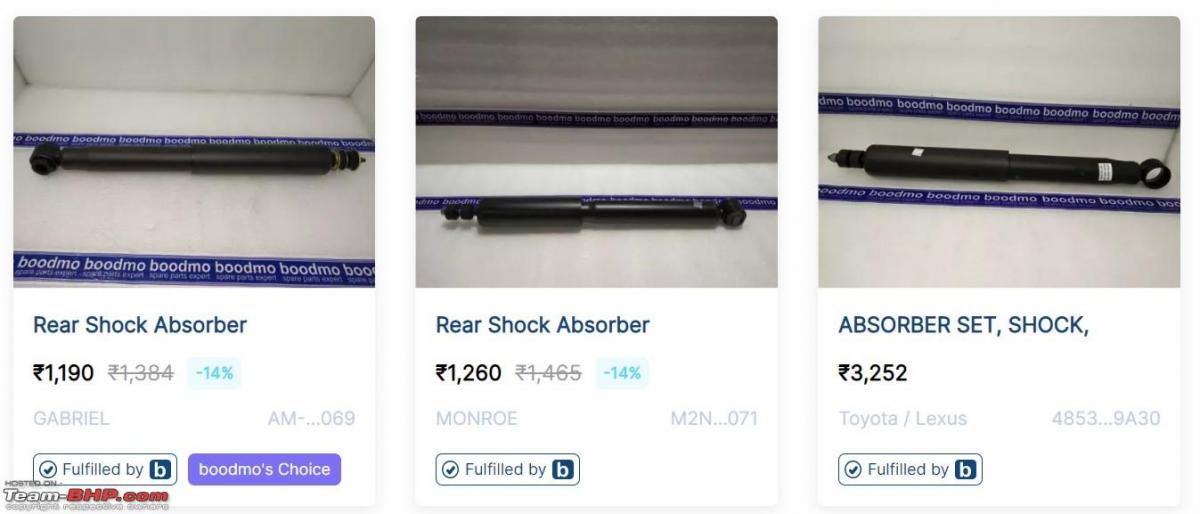
Thanks in advance for the help!
Here's what BHPian sagarpadaki had to say about the matter:
My suggestion is to go for aftermarket only if you can confirm that Monroe/Gabriel are the OE for Toyota. Original Toyota shock absorbers are of better quality. You can get them fit at any FNG. It is a very simple job to replace the shocks. No need to worry too much about torque spec.
Since you are not sure if the shock absorbers were replaced earlier or not, replace both of them as pair.
Here's what BHPian Manoj2268 had to say about the matter:
Alternatively, you can also look for KYB shocks. KYB are OE for many Japanese Manufacturers.
Also, on the shock, there will be markings showing the name of the OE manufacturer, in addition to the Toyota logo.
Also, Boodmo shows that the prices for Monroe/Gabriel are in the range of 1500, the TKM/Lexus branded, 3.5K-ish.
Here's what BHPian aaggoswami had to say about the matter:
My 2012 Innova rear RHS shock absorber developed a leak around Diwali last year. Got Monroe as a replacement and took it to FNG for fitment. Job barely took 40-45 mins. and a new shock absorber was installed. I changed only the one which was leaking. For regular driving, it works well. Monroe is slightly stiffer than regular, this is felt more when the car is having only one or two occupants. But nothing out of the blue. You can safely go for Monroe if you are sure it's not a counterfeit.
Here's what BHPian Jeroen had to say about the matter:
Most shocks are replaced in pairs. The only way to tell is to look it up in the Manufacturer's workshop manual.
On my Mercedes and my Jaguar, they can be replaced individually according to their respective workshop manual.
I am not quite sure about the technical reason behind replacing them in pairs. Other than they tend to be of equal age, so are likely to fail shortly after one fails. There are some people that claim an old and a new shock give different dampening. I am not sure I buy into that. Modern shocks work or they don’t. There is not much in between working properly and failing when it comes to shocks.
To some extent, the same story applies to springs as well. I do find it more plausible to replace springs in pairs. I have replaced many springs and often you can measure the difference between the old and the new spring. Both inspring and loaded. So if you replace only one, your car is going to tilt ever so slightly.
But when in doubt make sure to look it up in the respective workshop manual.
Check out BHPian comments for more insights and information.
- Tags:
- Indian
- Innova
- Toyota Innova
- Suspension
News
3rd-row in 7-seater SUVs or MPVs: How often do people use it
I have a Toyota Innova and in the past 1 year, I must have used the last row only 4 times.
BHPian jonesanto recently shared this with other enthusiasts.
I have been using an Innova for a year now, recently I had an interesting chat with a friend who owns a 2018 Crysta and owned an Innova before. It started with why we Indians simply love the Innova and then he pointed out, he hardly ever had to use the last row for seating purposes. His old Innova and Crysta combined he could surely tell, not more than 15 times last row was used for accommodating people.
Then I had to do my count, till then I never ever thought about this, I used the last row 4 times in one year. It is not that we never travel with more than one family, 4 adults and 2-3 kids are fine, but if more adults are involved, we simply prefer taking another car. Then we checked the cases of other 7-seaters from our known circle and most Toyota’s hardly use their third row for seating purposes, my brother owns Innova and Fortuner, same case with him too.
Think this is an interesting observation and it’s mainly applicable to Toyota 7-seaters. Because if you purchased any other company's 7-seater you sure would have had the use for it, but not with Toyota, many like me, my brother and my friend simply purchased a Toyota 7-seater because of the reliability, space and comfort it offers. It is easy to own, easy to service and easy to sell if required.
How about you? Did you buy a 7 seater because you actually need a 7 seater or bought it considering other factors (whiteboard of course)?

Here's what GTO had to say about the matter:
There are many SUVs & a few MPVs I'd buy, not because I absolutely need a 3rd-row of seats, but because I love the vehicle. Examples = XUV700, Kodiaq, Innova Crysta & Hycross, Carnival, Scorpio-N, Carens & Mercedes GLS.
We are 4 siblings & roam around a lot with our families. A 3-row SUV & MPV will definitely help, even if we use that 3rd-row just once or twice a month. Kids can jump on the backseat. That 3rd-row can many times be the difference between all having fun travelling together, or being forced to take a 2nd car along… thereby splitting the group.
3-row SUVs also usually have amazing boot space for hauling cargo. I like big cars and naturally gravitate toward the longer variant. E.g. I love the Safari more than the Harrier.
Here's what BHPian SmartCat had to say about the matter:
I paid Rs. 2.5 Lakhs per seat and I make sure all seats are used extensively used -> for city travel & outstation trips (with in-laws) and even school runs (car pooling).
The roof rack + roof bag too is being used extensively. I'm actually on my second roof bag, because the last one had minor tears in places.
However, it has done just 55,000 kms in 7 years. That's because it is a "second car" and is used only when needed.
Here's what BHPian Shreyans_Jain had to say about the matter:
My Hexa’s third row is used pretty often. The seats are almost never folded down, always up and ready for use. The fact that this is the most comfortable third row in the business has played a big part in this, for no one has ever been apprehensive about getting in there, even if it is for a few hours. My daughter’s child seat is also set up in the third row.
The car retains a proper usable boot even with the third row up, and that has been a crucial part of the practicality equation.
Here's what BHPian libranof1987 had to say about the matter:
Absolutely. We are a family of five, and my kid is always in the car seat.
There is no car that seats two adults and a car seat in the middle row comfortably. Sure, you can have just about sufficient space but when you want to do long road trips (~ 6-10 hours/day), you want to travel in absolute comfort, i.e. no rubbing shoulders, adequate leg room and so on.
Eventually, we realised we'd need a three-row car just due to this. Sold off the EcoSport and got the Crysta. Had we not been using the car seat for the kid, even the EcoSport would have sufficed, albeit at a significant compromise for the middle occupant and the child's safety (no three-point belt for the middle occupant).
Furthermore, when getting the Crysta, there was confusion regarding getting the bench variant vs. the top variant (most safety features) since the top-end Crysta only has captain seats. Decided to get the top variant since even if we had a bench middle row, we'd still use the third row anyway, and safety has always been THE deciding factor on variant/car.
Check out BHPian comments for more insights and information.
News
Here's how the Toyota Innova Hycross base variant looks
Toyota has started dispatching entry-level trims, aimed at fleet operators.
The Toyota Innova Hycross was launched in December last year. You may have seen the MPV on the road by now, but most of these have been high-end variants. Now, Toyota has started dispatching entry-level trims, aimed at fleet operators.
The Innova Hycross is available in six variants with prices starting at Rs 18.55 lakh (ex-showroom) for the base G trim. As you can see in these images, the G trim looks very basic with its steel wheels, black grille and bumper inserts.
It’s a similar story on the interiors, which looks quite dreary with grey plastics all around. The centre console houses the manual AC module and the shift lever and has provision for an infotainment system. You will also spot a few dummy buttons on the dashboard. The taxi variant gets a 3-spoke steering wheel and a twin-dial instrument cluster with a central MID.
The base variant of the Innova Hycross is powered by a 2.0-litre, 4-cylinder petrol engine that makes 172 BHP and 197 Nm. It is paired with a CVT.
News
Toyota Innova dominance: From a 2005 model to the latest Innova Hycross
Our car produced 136hp and 181Nm from its 2.0L petrol engine, which was a lot compared to its competitors like the Tata Sumo, Mahindra Scorpio or Chevrolet Tavera.
BHPian CEF_Beasts recently shared this with other enthusiasts.
This post pulls on my heartstrings, because as a 4-year-old kid the car that really got me into cars was the 2005 Innova we had at home!
I still remember as a kid my dad had got home some confidential documents related to the Innova (Innova = Innovation), before the car was launched in 2005, pertaining to the development of the car on the IMV platform. My dad was somehow related to the Innova project in India, and our car was built on the production line in front of his eyes, till date I have never asked him in what way was he involved in the project, looks like it's a good time to ask him!
We had a Ford Ikon 1.6L before the Toyota Innova and when my dad had booked the Innova, a gentleman who worked at GM, had questioned my dad about why are you putting money into an unknown product from Toyota, the Japanese Giant, well the rest is history as we see today.
Our Innova was pushing out 136hp and 181Nm from its 2.0L petrol motor, which was a lot compared to competitors like the Sumo, Scorpio or Tavera back in the day. 12.36 seconds 0-100 kmph was unheard of from such a large MPV back in the day! This petrol engine was quite rare, considering the 102hp 2.5L Diesel made up the majority of the sales, and I still remember closer to 2014 fuel pump attendants would scurry to see a Petrol-Powered Innova at their bunk!
One thing that made the Innova really what it is today, apart from the Qualis, was and is the brilliant build quality, Toyota India's after-sales network, excellent service experience and top-notch reliability. We sold our car very early, in 8 years and 92000kms itself to be precise, which is nothing for a car like the Innova, not because it was giving us problems but because we had gotten bored of the car and upgraded to the Fortuner in 2014, which was not the best decision if we look back, TBH! It takes hard work, excellent after-sales and reliability for a product to become a household brand and eventually become a brand name in itself, something which cannot be said about a lot of the current products from various manufacturers on offer today!
The Innova's price started increasing exponentially late in its lifecycle, yet people would flock to get hold of one!
The other day my dad called me and told me our Fortuner replacement is decided, I knew the car even before he told me! Having completed 9 years with the Fortuner in Feb 2023, we're actively on the lookout for a replacement. The car that my dad saw parked on the road and took an immediate liking to its SUV-like styling was nothing other than the new Innova (HyCross)! He is a massive fan of the Hybrid tech ever since he drove the Camry Hybrid a few years back.
Having travelled in cabs across the country, never did I ever meet an unhappy Innova driver. Cabbies just endlessly praise the car, clocking several lakhs of kilometers without breaking a sweat, be it the OG Innova or the Crysta! The Crysta's return in manual guise has made the cabbies the happiest lot!
There is a saying: Once you become a Toyota owner you just cannot look at any other brand as a replacement for a Toyota! This is true for the cars we have at home, the constant that will always stay at home is a Toyota! TBH, the credit for owning a BMW (our first premium car) today goes to nothing but the Toyota sitting beside it at home, for whenever the BMW throws a tantrum (fingers-crossed it never does throw one), the Toyota will come to the rescue!! And coming to the service experience of a premium brand like BMW and a mass-market brand like Toyota, the premium brands have miles to go before they can even dare to reach Toyota's after-sales levels!!
And lastly, want to know how Toyota celebrated the 1 Million Milestone for Innova?
By raising the prices of the Innova HyCross by 75k within 2 months of launch, w/o any price protection for people who had pre-booked their cars, unlike Mahindra which gives price protection!
The Innova Evolution



There are two things that I am unhappy about though:
- The plastic quality in the HyCross has taken a mighty dip compared to even 2005 Innova standards, with scratchy plastics galore in the cabin! No true-blue Toyota ever had such scratchy plastics, to be honest, well the best-of-best manufacturers learn some cost-saving tricks from the market leader!
- The Price hikes Toyota India does as a mass-market brand is truly obnoxious! The Fortuner pricing for us has simply gone out of budget, my heart still wants a Fortuner but somewhere there has to be a limit as well…
Here's what GTO had to say about the matter:
The king indeed. So many tried to compete with the Innova (Xylo, Aria, Marazzo...), but no one succeeded. The Kia Carens is the only MPV that garnered good volumes, albeit at a lower price / size band.
Brand "Innova" is perhaps as powerful in India as the brand "Toyota" itself. That kind of power is enjoyed by very few products (internationally, "iPhone" and "Apple" would be great examples).
Never met an unhappy or regretful Innova owner. No matter whether they bought the car at 6.8 lakhs or more recently, 30 lakhs. That's saying a lot.
Here's what BHPian Contrapunto had to say about the matter:
I had a very, very happy ownership experience with the Innova- 2006 model. Bought preowned, used it for more than 1 lakh Km and sold it for a new Ecosport since my wife (the other driver) found the steering too stiff.
I hope I can own the new Innova over the next couple of years.
Here's what BHPian RRM had to say about the matter:
The saying stands true to it. I was a 1st gen Hyundai Verna owner and post 3 yrs. moved to a 2005 pre-owned diesel Innova V. Sold the 2005 model and then later moved to the 2012 V model. Family doesn't want anything else other than Innova as they love the captain seat comfort and the space. I don't want to change to any other brand as I get the best and most economical service, time and again.
I was also trying to move to Fortuner AT, but even pre-owned 2nd gen onwards demands a premium and hence have stopped looking out and continue to use Innova.
Check out BHPian comments for more insights and information.
News
Toyota Innova Hycross: Observations after a day of driving
The Innova Hycross' NVH levels are impressive. The car does a good job of keeping most noises out of the cabin most of the time.
Driving the Innova Hycross 2.0L Hybrid
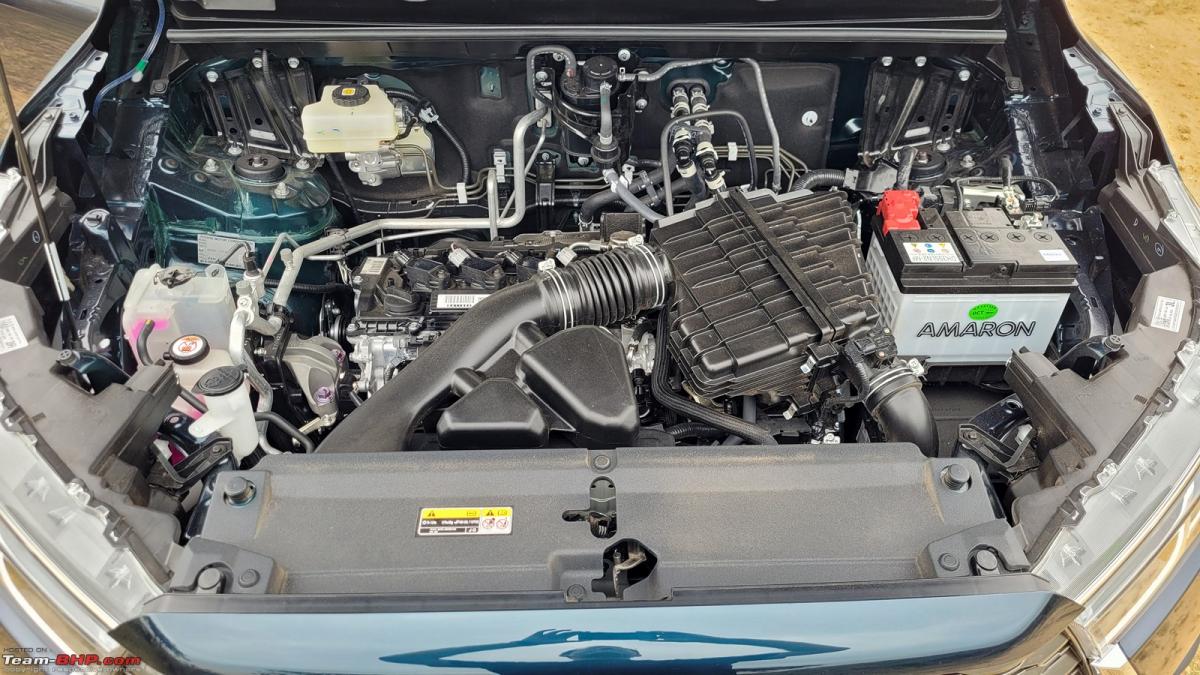
The Toyota Innova Hycross Hybrid is powered by a 5th Generation Self-Charging Strong Hybrid Electric System with TNGA 2.0-Litre 4-cylinder VVTi petrol engine. The car has a 1.7 kWh Ni-MH battery that powers the electric motor. Its combined power is 184 BHP and motor torque is 206 Nm. The engine is paired to an e-Drive transmission with sequential shift.
With your foot on the brake, press the engine start button. It doesn't result in the usual sound of a starter cranking the engine to life; it's eerily silent & for those who haven't experienced electric or hybrid cars before, this does take a little getting used to. Slot the gear lever into D and you're all set to roll.
One of the first things you notice is the absence of a rev counter. It sure feels weird to drive a car without the rpm needle moving up & down. The instant torque from the electric motor ensures that the Innova Hycross immediately darts forward. Low-end torque is good. In heavy traffic, you can drive the car without any throttle input. The petrol engine turns on only when extra shove is required, or if the batteries are below a certain charge level. The engine also switches on when the car crosses ~40 km/h. While the insulation is superb & regular folk won't know, enthusiasts will notice when the petrol engine suddenly kicks in. Whether it is driving in bumper-to-bumper traffic or closing gaps, the Hycross does it effortlessly. The e-Drive transmission provides a seamless experience in the city. As there aren't any actual gear shifts taking place, the drive feels amazingly smooth. Throttle response is good and the rubber-band effect is well-controlled with a light foot on the accelerator. These traits make the Innova Hycross very easy to drive in the city.
On the open road too, the Innova Hycross provides satisfactory performance. There is enough power and torque on offer to keep up with the traffic with ease. The powertrain responds well to throttle inputs and power is always available. Outright performance is strong. Toyota claims that the Hycross will do a 0-100 km/h sprint in under 10 seconds, which we are tempted to believe. Slow-moving vehicles are overtaken without any drama. In terms of cruisability, the Hycross proves to be a good mile muncher. It can maintain triple-digit speeds effortlessly. At the same time, the cabin is quiet, cutting out most of the outside noises.
The Hycross gets drive modes that basically alter the throttle response as well as the behaviour of the internal combustion engine. There is a dedicated EV mode button that will let you drive the car as an EV for the max distance possible. However, if you are heavy on the throttle or the car crosses ~40 km/h or the battery's state of charge is too low, the system will go back from EV mode to hybrid mode.
Apart from the EV mode, there are 3 drive modes: Normal, Eco and Power. These 3 modes alter the throttle response.
The normal mode is the default mode which is in between the middle of Eco and Power modes. It works well in town and on the highway and offers a good balance between efficiency and performance. In fact, you really don't need to change it unless you're driving uphill or want to overtake a vehicle quickly on an undivided highway.
In Eco mode, the internal combustion engine doesn't come on as easily unless you press the throttle a lot more. The response is lazier and it tries to keep it in hybrid mode with the internal combustion engine only charging the battery and not sending power to the wheels unless the accelerator is pressed very firmly.
In Power mode, it's the opposite. Even with a light dab of the throttle, the internal combustion motor comes alive and assists the power delivery. On undivided highways, this is the mode to use to pull off safe overtakes. Throttle response is much sharper and you rarely see the internal combustion engine turning off. Of course, this mode impacts fuel efficiency the most. Don't use this mode in the city as power delivery can get a little spiky.
The gearbox also has a manual mode. You can use the gear shifter or the paddles behind the steering wheel to change gears. You'll like the engine braking on offer. The gearbox has an "S" mode too in which the transmission holds the gears for a little longer than in the regular D mode.
Thick insulation has been provided under the bonnet:

Engine bay has a lot of free space:

Noise, Vibration & Harshness (NVH)
The Innova Hycross' NVH levels are impressive. The car does a good job of keeping most noises out of the cabin most of the time. It's only when you press the accelerator harder that you can hear the 2.0L petrol engine. However, it is never loud and intrusive and the occupants of the car do not have to raise their voices while talking to each other. In fact, the insulation is so good that on the go, even the horn of the car is heard very faintly inside the cabin! We did not feel any vibrations even when the petrol motor came on.
Wind noise, road noise and suspension noise are well-contained.
Mileage & Fuel economy
In our short drive, which included some fast driving and lots of idling, we saw 14.3 km/l on the MID. With better driving, we are pretty sure that the hybrid will deliver much better FE figures. Toyota claims that the car can deliver 21.1 km/l.
Suspension

Ride Comfort
The Toyota Innova Hycross gets a MacPherson strut suspension at the front and a semi-independent torsion beam suspension setup at the rear. The suspension is well-tuned to provide a compliant ride. However, the car rides on 18" rims with 225/50 section tyres. While the width of the rubber is fine, the sidewalls are just too short. This results in more bumps and potholes being transmitted to the occupants than we would like. While the ride is still fine, we are pretty sure that it would be better with taller rubber. Even with speeds increasing, the ride remains compliant. We didn't get to check the ride out on very bad roads though.
Handling & Dynamics
High-speed stability is very good. Even at 120 km/h, there is no floatiness or nervousness displayed by the Hycross. While we did not get a winding road to try out the car's handling, we did try some quick lane changes on an empty stretch of road. As expected, the Hycross has more body roll compared to a sedan or crossover. But, it is noticeably lesser than the old body-on-frame Innova Crysta. Again, the tyres provide good grip and the car sticks to its line through curves. Overall, the Hycross certainly feels more car-like to drive compared to its predecessor.
Steering
The Innova Crysta had a very heavy hydraulic steering. This made the car cumbersome to drive at low speeds. The Hycross gets an electric steering that is well-calibrated. It is light at slow speeds and gets heavier as the speed goes up. This along with the healthy rake and reach adjustment, makes the Hycross way better to steer than the old Innovas. That said, it could do with more feedback.
Braking
Being a hybrid, braking is different compared to conventional cars. With disc brakes all around, the stopping power is good. But the braking needs time to get used to. It's not easy to get a linear braking response. Sometimes you hit a bump faster than you intended to since the braking isn't linear. This needs getting used to. It will catch you off guard initially, but after a while, you get accustomed to it and change your braking style accordingly.
Continue reading the discussion on the Toyota Innova Hycross on our forum.
- Tags:
- Indian
- Innova
- Innova Hycross
News
Toyota Innova Hycross Review : 9 Pros & 8 Cons
The Innova Hycross is quite different from the Crysta when it comes to styling and is quite a head-turner. Toyota has made the car look a lot more SUVish compared to its predecessor.
Toyota Innova Hycross Pros
- A great-looking MPV. SUV’ish styling packs appeal
- Upmarket interiors, good comfort in all 3 rows and usable boot (even with 3rd row up)
- Loaded to the gills with features such as a panoramic sunroof, ventilated seats, electrically adjustable rear ottoman seats, multi-zone climate control, connected car features, leather upholstery, drive modes, etc.
- Hybrid powertrain makes it lighter on the pocket than a diesel and future-proof too. Very good fuel efficiency (expect city FE of 15-17 km/l)
- Impressive performance with a sub-10 second 0-100 km/h time (Toyota claims 9.5 seconds)
- Monocoque construction results in sorted handling and comfortable ride quality
- Brilliant NVH levels result in a quiet and serene experience inside the cabin
- Toyota's bullet-proof reliability, excellent after-sales service and fuss-free ownership experiences
- Safety features such as 6 airbags, Toyota Safety Sense (ADAS), ABS, ESP, TC, all-wheel disc brakes, hill hold, TPMS, Isofix & 3-point seatbelts for all
Toyota Innova Hycross Cons
- Expected to be even more expensive than the already-pricey Innova Crysta. Will be premium-priced
- Top-end variants are only available with captain seats in the middle row. No bench option is inexplicable!!
- 18" wheels with 50 profile tyres compromise the overall stance; they look very small
- Monocoque construction won’t be as rugged & abuse-friendly as the Crysta's body-on-frame build
- Rear seat ottomans are useless for taller passengers
- Average sound quality from the JBL system, poor camera resolution and a basic infotainment system display
- Missing features such as rain-sensing wipers, lumbar adjustment, boss lever on the front passenger seat...
- The already-good ride quality could be even better with higher profile tyres (e.g. on craters). 225/50 sidewalls are on the shorter side
Read Team-BHP's detailed Toyota Innova Hycross Review.
- Tags:
- Indian
- Innova
- Innova Hycross
- Review
Pages



